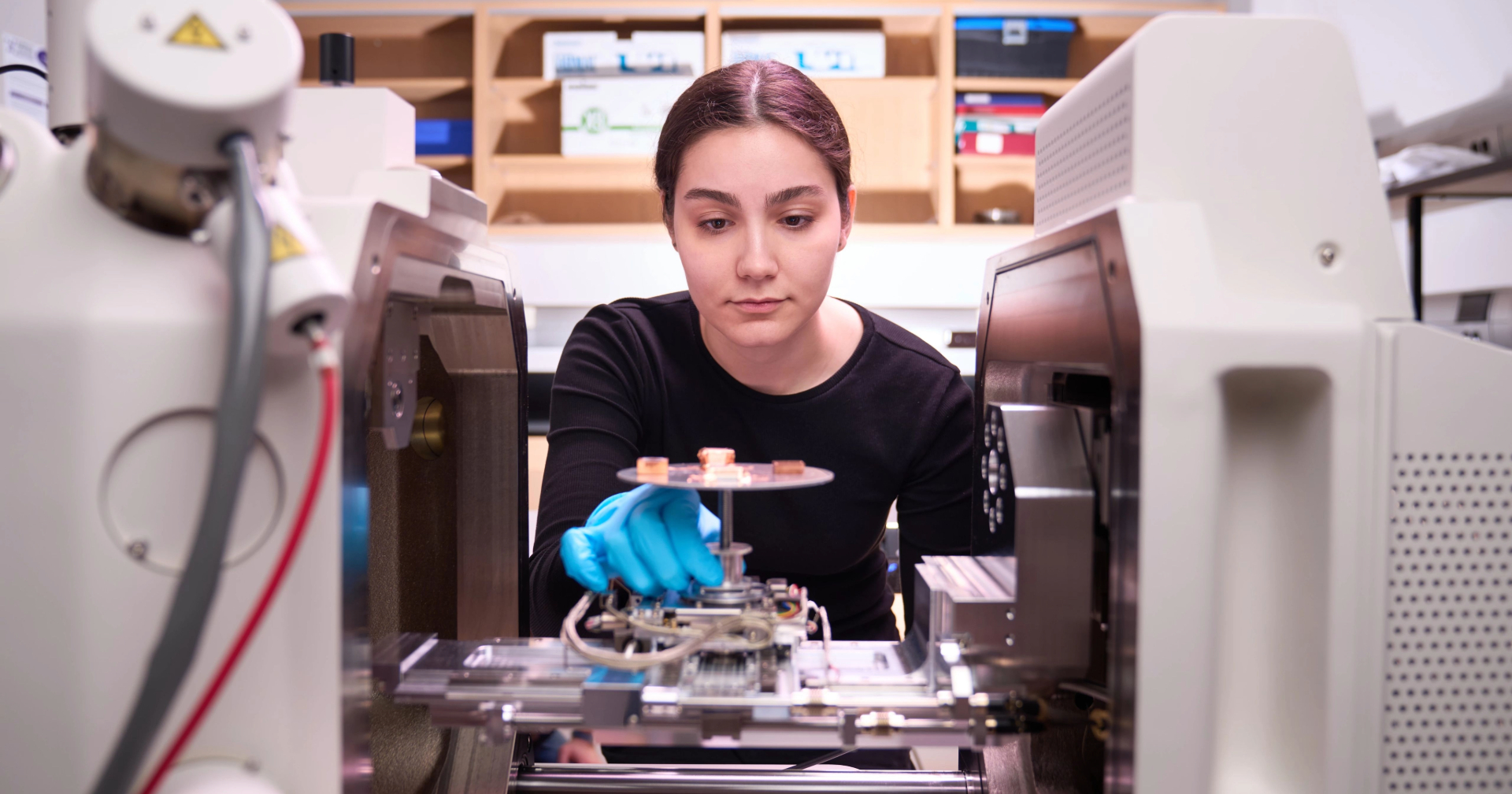Science
Western and McMaster Forge Partnership for Shared Research Access

Western University and McMaster University have established a groundbreaking partnership that grants shared access to 13 advanced research facilities across both institutions. This initiative aims to enhance the research capabilities in Southern Ontario, providing a collaborative environment that fosters innovation and interdisciplinary exploration.
Penny Pexman, Vice-President (Research) at Western, highlighted the significance of this collaboration, stating, “Collaboration is the key to accelerating outcomes.” By leveraging shared resources, researchers can address pressing questions that impact both the region and the nation more effectively.
The agreement allows McMaster researchers to utilize seven state-of-the-art facilities at Western, including the Biotron, Surface Science Western, and the ImPaKT Facility. Conversely, Western researchers gain access to six premier platforms at McMaster, such as the Canadian Centre for Electron Microscopy (CCEM) and the McMaster Manufacturing Research Institute. These facilities, known as core research platforms, feature specialized equipment essential for advancing scientific research and maintaining competitiveness on the global stage.
Enhancing Research Collaboration and Sustainability
The partnership is designed to improve the operational sustainability of these facilities. By sharing resources, both universities can increase utilization rates, ensuring that investments made by federal and provincial governments yield maximum benefits. Researchers will pay the same rates as those affiliated with the host institution, effectively removing financial barriers that often hinder collaborative efforts.
Gianni Parise, Vice-President (Research) at McMaster, emphasized the importance of this partnership in strengthening regional research capacity. “By opening access to our core research platforms, we’re maximizing investments and empowering researchers to push boundaries,” he stated.
The initiative is set to launch as a three-year pilot project in March 2025, with the potential for future expansion to include additional facilities. Mark Biesinger, Director of Surface Science Western, expressed optimism about the arrangement, noting that it will provide McMaster researchers access to cutting-edge technology and expertise available at Western.
He explained, “We are world leaders in surface analysis and materials characterization. We can execute some techniques that are only available in a few places across the country.” Biesinger also pointed out the existing collaborations between researchers at both institutions, particularly at the CCEM, which he described as “a world-class facility.”
Unlocking New Opportunities for Innovation
The shared access agreement not only facilitates resource sharing but also promotes an environment conducive to new discoveries. Nabil Bassim, Director of the CCEM, expressed excitement about the potential for increased collaboration. “We’re excited to welcome more Western researchers into our facility and use this as a springboard to spark new collaborations,” he said.
The initiative will allow for more hands-on training for students, enhancing their educational experience while contributing to impactful research outcomes. The core facilities available to both universities include the following:
Western facilities available to McMaster researchers:
– Biomolecular Core Facilities
– Biotron
– Centre for Functional and Metabolic Mapping
– Imaging Pathogens for Knowledge Translation Facility (ImPaKT)
– Interface Science Western
– Tandetron
– Western Nanofabrication Facility
– Surface Science Western
McMaster facilities available to Western researchers:
– Canadian Centre for Electron Microscopy
– Canadian Neutron and Positron Beam Lab
– Centre for Advanced Light Microscopy
– Centre for Emerging Device Technology
– McMaster Manufacturing Research Institute
– McMaster Analytical X-ray Diffraction Facility
This partnership marks a significant step toward creating a more interconnected research community in Southern Ontario, where collaboration is not just encouraged but institutionalized. By breaking down barriers and maximizing resource utilization, Western and McMaster aim to foster a research ecosystem that is both resilient and innovative.
-

 Education3 months ago
Education3 months agoBrandon University’s Failed $5 Million Project Sparks Oversight Review
-

 Science4 months ago
Science4 months agoMicrosoft Confirms U.S. Law Overrules Canadian Data Sovereignty
-

 Lifestyle3 months ago
Lifestyle3 months agoWinnipeg Celebrates Culinary Creativity During Le Burger Week 2025
-

 Health4 months ago
Health4 months agoMontreal’s Groupe Marcelle Leads Canadian Cosmetic Industry Growth
-

 Science4 months ago
Science4 months agoTech Innovator Amandipp Singh Transforms Hiring for Disabled
-

 Technology4 months ago
Technology4 months agoDragon Ball: Sparking! Zero Launching on Switch and Switch 2 This November
-

 Education4 months ago
Education4 months agoRed River College Launches New Programs to Address Industry Needs
-

 Technology4 months ago
Technology4 months agoGoogle Pixel 10 Pro Fold Specs Unveiled Ahead of Launch
-

 Business3 months ago
Business3 months agoRocket Lab Reports Strong Q2 2025 Revenue Growth and Future Plans
-

 Technology2 months ago
Technology2 months agoDiscord Faces Serious Security Breach Affecting Millions
-

 Education4 months ago
Education4 months agoAlberta Teachers’ Strike: Potential Impacts on Students and Families
-

 Science4 months ago
Science4 months agoChina’s Wukong Spacesuit Sets New Standard for AI in Space
-

 Education3 months ago
Education3 months agoNew SĆIȺNEW̱ SṮEȽIṮḴEȽ Elementary Opens in Langford for 2025/2026 Year
-

 Technology4 months ago
Technology4 months agoWorld of Warcraft Players Buzz Over 19-Quest Bee Challenge
-

 Business4 months ago
Business4 months agoNew Estimates Reveal ChatGPT-5 Energy Use Could Soar
-

 Business4 months ago
Business4 months agoDawson City Residents Rally Around Buy Canadian Movement
-

 Business4 months ago
Business4 months agoBNA Brewing to Open New Bowling Alley in Downtown Penticton
-

 Technology2 months ago
Technology2 months agoHuawei MatePad 12X Redefines Tablet Experience for Professionals
-

 Technology4 months ago
Technology4 months agoFuture Entertainment Launches DDoD with Gameplay Trailer Showcase
-

 Technology4 months ago
Technology4 months agoGlobal Launch of Ragnarok M: Classic Set for September 3, 2025
-

 Technology4 months ago
Technology4 months agoInnovative 140W GaN Travel Adapter Combines Power and Convenience
-

 Top Stories3 months ago
Top Stories3 months agoBlue Jays Shift José Berríos to Bullpen Ahead of Playoffs
-

 Science4 months ago
Science4 months agoXi Labs Innovates with New AI Operating System Set for 2025 Launch
-

 Technology4 months ago
Technology4 months agoNew IDR01 Smart Ring Offers Advanced Sports Tracking for $169










